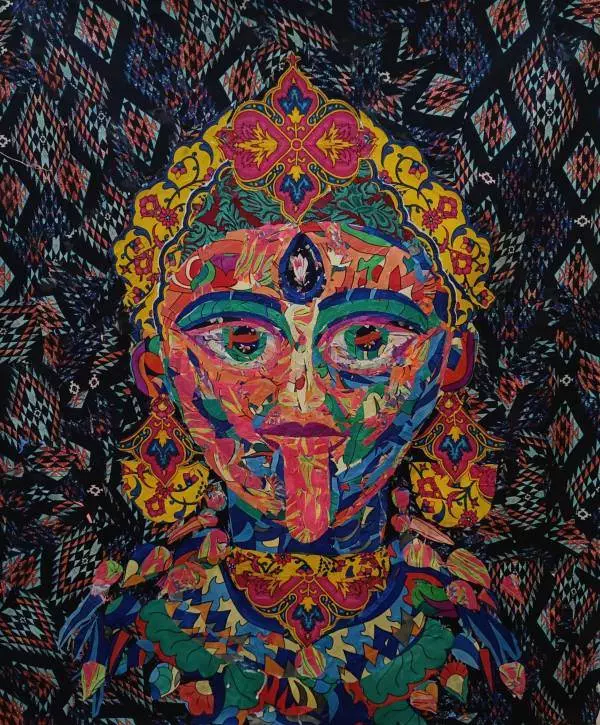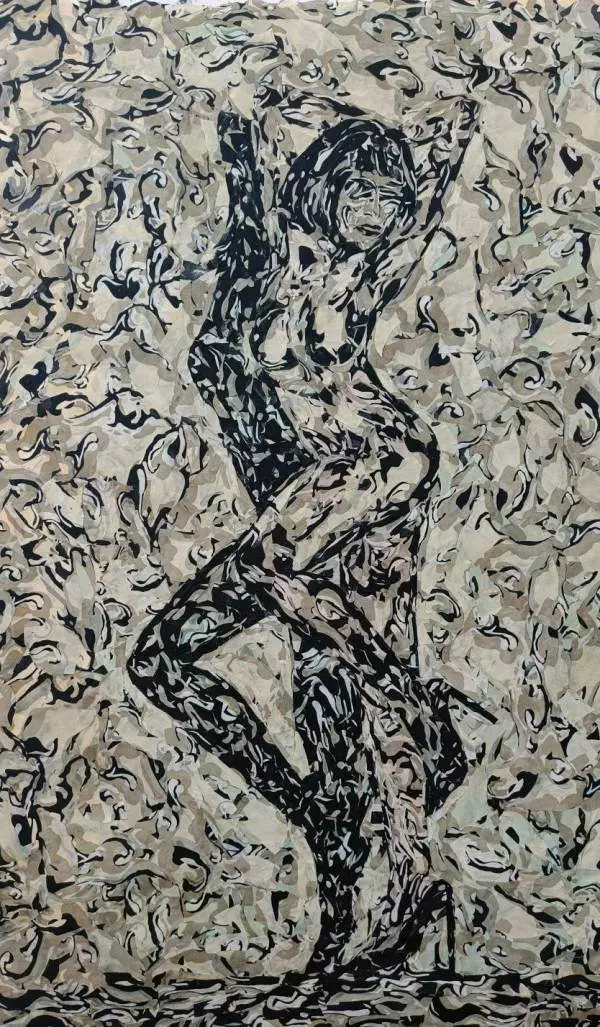Sapna Karn’s form and technique are completely of her own and it is admirable that she was able to quickly carve out a place for unique visual aesthetics and discover her own powerful personal language.
Sapna deliberately chose to investigate different types of textiles and fabrics and use these elements into her artwork. This shift is political in nature, as it allows the artist to become less reliant on the market and the cliched stationery art accessories. The artist gathers leftover and discarded fabrics from local stores and tailors on the ground, and the work is then established based on the conceptual framework, any particular emotion, or thought.
Artist
Sapna Karn






Biography
Sapna Karn’s form and technique are completely of her own and it is admirable that she was able to quickly carve out a place for unique visual aesthetics and discover her own powerful personal language. Sapna Karn has completed her post-graduation and graduation in fine arts from the College of Art, New Delhi; and during her master’s program, the encounter and practice with new materials helped her to achieve her signature style. Sapna deliberately chose to investigate different types of textiles and fabrics and use these elements into her artwork. This shift is political in nature, as it allows the artist to become less reliant on the market and the cliched stationery art accessories. The artist gathers leftover and discarded fabrics from local stores and tailors on the ground, and the work is then established based on the conceptual framework, any particular emotion, or thought. Sometimes the artist works spontaneously on the surface by arranging and weaving the fabric patches and happily wanders into abstract idiosyncrasy of visuals and builds up the work like a musical composition. In a way, the ancient recycling practice of stitching and weaving old textiles for reusing (sometimes for the next generations) practiced in Indian homes is revived by this specific technique of gathering scrap fabrics and transforming them into an artwork through expert, conceptual patchwork. More significantly, though, is the upcycling and sustainable aspects associated with it. Each of Sapna's creations is a diligent example of an upcycled piece of art, as she saves the unused textiles from ending up in a landfill. This provides an alternate method of producing artwork by carefully managing leftover materials and trash. A new dynamic of using found materials can be traced in the artist’s body of work, inspiring to create a pathway marker of working with materials that are very much rooted in the groundwork. The thematic of Sapna’s works traverse various areas from the feminine gaze, body politics, and sociocultural issues to abstraction. With a diverse body of work rooted in the process of upcycling and sustainable practice, the works open up a fresh window in the Indian art ecosystem.
Sapna has been exhibiting her works for more than half a decade now. Among her international accolades, she participated in the group exhibition ‘Natural Impressions’ at the art gallery Museu Textile, New Orleans, and was featured in the ‘Textile Curator’, UK. Her participation in various exhibitions across India including the AIFACS 91st Annual Art Exhibition in 2018, The Ravi Jain Memorial Annual Exhibition at Dhoomimal Art Gallery in 2017, ‘Celebrating the transit’ group exhibition organized by Lalit Kala Akademi, Chandigarh, 2017, and many others.